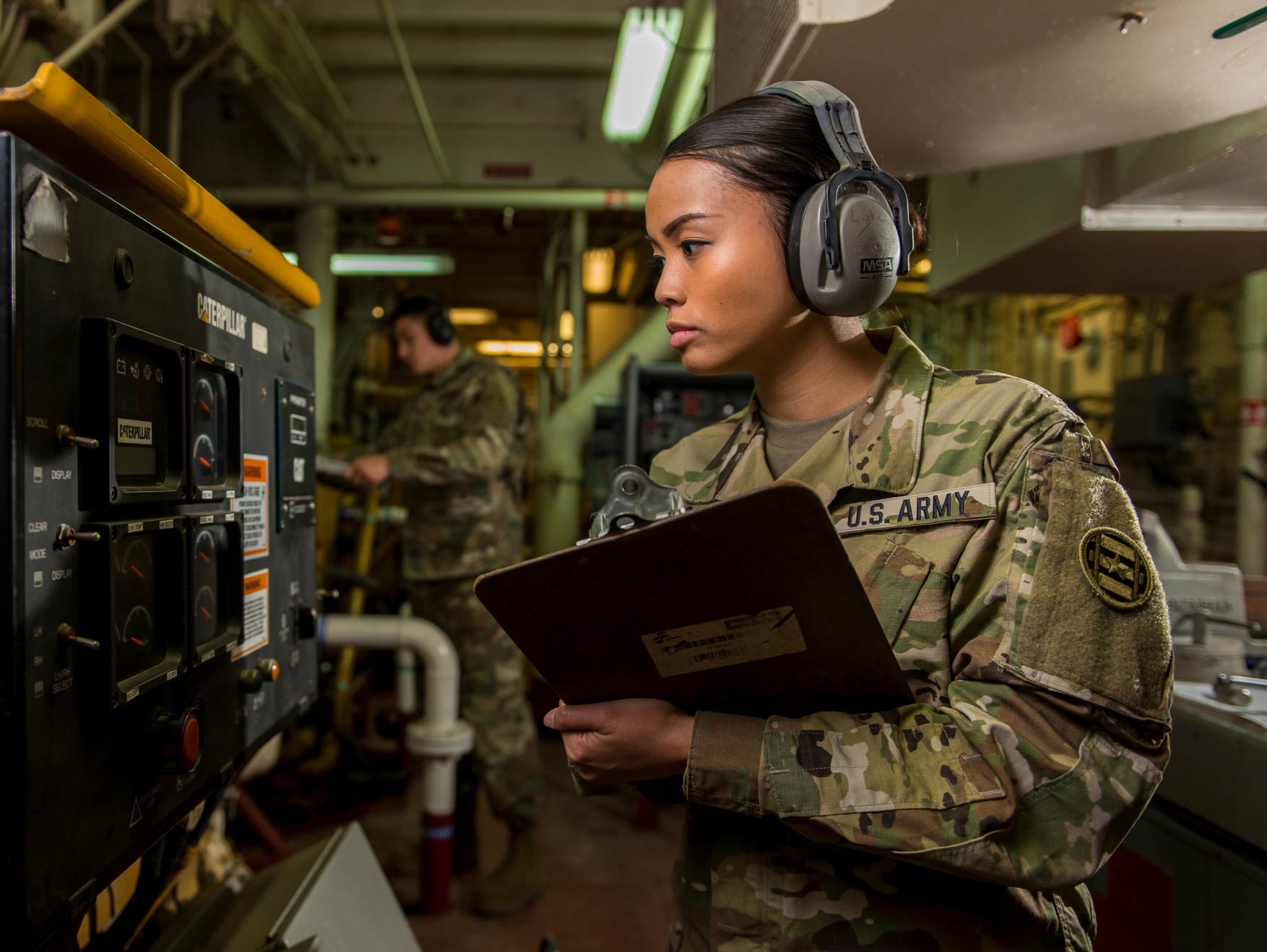Our ASVAB Electronics Information Study Guide covers everything from basic electrical symbols and functions to electrical wiring and other topics. While some topics may appear familiar, it is critical to learn more about the fundamentals of electronics, such as how circuits work, the primary definition of electric current, conductors, and circuits, and the application of Ohm’s law.
Such sections of the study guide consist of various questions on analytical vocabulary and the ability to intuitively comprehend simple electrically-inclined concepts. Remember to focus more on the topic’s foundation and avoid overlooking even the most basic conditions when studying the ASVAB electronics study guide, as this will substantiate the concept definitions that will be mentioned in the subsequent sub-topics and outlines of the study guide. The information below will show you some basic concepts you may meet in your ASVAB electronics test.
Besides, to strengthen all of your skills, take our free ASVAB practice test 2025 or read more ASVAB Study Guide for all 9 ASVAB subject areas.

The Electronics Information ASVAB measures your understanding of electrical equipment and parts, including electricity principles, circuits, currents, radio, batteries, resistors, etc. On the CAT-ASVAB, you will be asked 16 questions in 8 minutes. On the paper-and-pencil version, you have to answer 20 questions in 9 minutes.
ASVAB Concept of Flowing Electrons
Like an electric current, this describes the manner in which concurrently occurs upon noting an excess of electrons that moves from the negative origin (−) to an area that has a deficit in electrons commonly known as the positive origin (+). Subsequently, the flow of electrons is reflective of the repulsive and attractive forces between varying charged components.
Circuits
It is a path that permits electricity to flow from one area to another. Regardless of consisting electrical components, the flow remains unobstructed by a break or gap in the circuit. More so, through the utilization of conducting materials, along with insulated wires, attached to and connecting both terminals forms a certain circuit.
A prime example that embodies a simple circuit is a battery-based flashlight. Upon pressing the ON button switch of the flashlight, it allows interaction between two contact strips, which initiates an electrical flow, conducted from the battery. The batteries are connected in such a way that the charges from the batteries then flow to the bulb eventually lighting it up.
Open and Closed Circuits
The components of a closed circuit are connected which allows the flow of electrons through conducting wires or materials toward a voltage sequence. On top of this, a gap in the circuit may hinder the connection from properly functioning. In simple terms, an open circuit won’t work while a closed circuit can.
Load
It is an electrical component or part of a circuit that drains electric power. This includes home appliances that harness electricity. The load may also be denoted as the power consumed by a circuit. It is the opposite of a power source as a load only dispels charge from a circuit but doesn’t yield power.
Series Circuit
It is a type of circuit that consists of a single path in which the whole current traverses from one component to another. It is only through each linear component in the series circuit that the current would categorically flow. More so, series circuits have the same current that runs through each component in the process.
The sum of the circuit’s resistivity is the sum of each component’s voltage drops and is the sum of the total voltage and total resistance in a series circuit, respectively. Equivalent resistance which is denoted by Req is the sum of each resistance in the circuit. Considering that there is only a single currency in the process, the term Req is usually used in calculating series circuits through Ohm’s Law.
Parallel Circuit
This type of circuit comprises multiple paths through which the current passes. With that separation of paths, the current’s power may vary. Regardless of the separated paths, the voltage drop remains the same across the remaining branches.
Unlike a series circuit, if a gap or break is observed in a parallel circuit or simply disconnected, the division will not hinder the current from passing through the other branches.
The parallel circuit’s equivalent resistance is exemplified as:
1Req=1R1+1R2+R3…Rn
where 1Req and R1 to R3 serve as the equivalent resistance, first resistor, second resistor, third resistor, and so on.

Electrical Power
It is a quantified scaling of the degree of work made by a circuit through a unit of time. Along it are formulas that calculate the electrical power dispersed or produced in the process such as:
P=VI
P=V^2R
P=RI^2
in which P is Power, I is Current, R is Resistance, and V is Voltage.
Take note that, it is the voltage source where power is generated and subsequently, dissipated by consisting loads.
Electrical Units of Measurement
Amperes—measures electrical current.
Ohms—measures resistivity.
Watts—measures electrical power.
Volts—measures voltage.
Metric Prefixes
nano- is 1⋅10^−9, micro- is 1⋅10^-6, milli- is 1⋅10^−3, centi- is 1⋅10^−2, kilo- is 1⋅10^3 and mega- is 1⋅10^6, and giga- is 1⋅10^9
Read more >> ASVAB Arithmetic Reasoning Study Guide
Subatomic Particles and Valence Shell
Every single object in the universe consists of basic infinitesimal particles termed atoms. Each atom has its own unique behaviors that depend on its internal foundation. They are composed of three smaller particles namely; protons, electrons, and neutrons. An element known as hydrogen is composed of a single proton but when it is added to another proton, it then becomes helium, and so on. If there is, however, a different number of neutrons inside the atomic nucleus, then it is signified as an isotope.
The Three Subatomic particles
Proton– is positively charged and weighs 1.673 x 10^-27
Electron– is negatively charged and weighs 9.11 x 10^-31
Neutron– has a neutral charge and weighs 1.675 x 10^-27
It’s worth noting that protons and neutrons constitute a vast majority of the atom’s mass. While electrons are much smaller than protons and neutrons, they co-exist inside the surrounding energy orbitals. When electrons are farthest from the nucleus, they are the most reactive to certain bonds.
Conductivity, Semi-conductivity, and Insulator
Conductivity is a measurement of quantified ease when material permits electric current to flow through it. Inversely, electrical resistivity measures the contradicting force when a material resists the flow of electric current.
Relatively, a conductor is a material that gives minimal resistance to the electric current. One good example is metal due to the lesser resistance during the electron flow process. Materials that possess high resistance are called insulators which also exhibit very low conductivity.
Between insulators and conductors are Semiconductors that have abilities in between both components. So when heated, semiconductors increase in conductivity while conductors experience increased resistivity.
Read more >> ASVAB General Science Study Guide
Current
It is the amount of charge per unit of time that passes through a specific circuit. Such that,
I= Δq/Δt
It is measured in Coulombs per second, or Amperes(A),
1 Ampere= 1 coulomb/second
Current, voltage, and resistance are related to each other through Ohm’s Law:
I=V/R
where I is current, V is voltage, and R is resistance.
Voltage
It is a charged pressure that pushes electrons to move in a circuit. Voltage is a quantitative expression of the electric potential difference between two charged points in an electric field. It is measured in Volts (v).
Also known as electromotive force, it is the force responsible for pushing the current through a circuit. It is somewhat similar to a difference in charged pressure due to the higher concentration of charge at one point of the components. This certain difference in concentrated charge results in a ‘voltage’.
Resistance
It is a property of certain naturally insulated materials that impede the channel of current procured by a conductor. To put it simply in perspective, conductivity and resistivity are inversely related. Resistance is measured in Ohms.
R=⍴⋅LA, where ⍴ represents the resistivity of the conductor, L is the length or distance, and A is the cross-sectional area.
Magnetism
It is defined as the manifestation of a phenomenon driven by electrostatic charges. More so, a magnetic field can instigate charged particles to make electricity, and the properties of magnets are collectively known for having the potential capacity to draw electricity from the attraction and repulsion forces situated on opposite poles.
ASVAB Electronics Information Resources
Following our free ASVAB Electronics Information study guide will ensure that you are well-prepared for the big day. Dozens of ASVAB Electronics Information practice questions combined with our unique gamified learning technique will significantly improve your knowledge and allow you to easily pass your ASVAB test.




